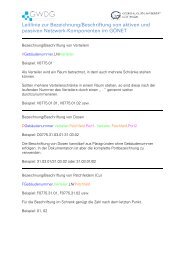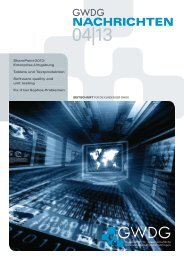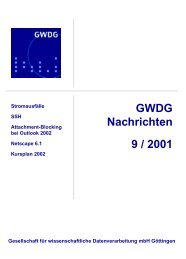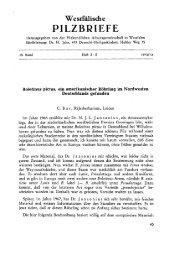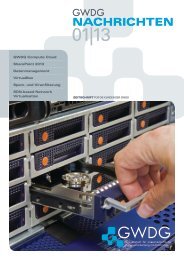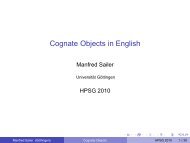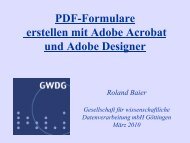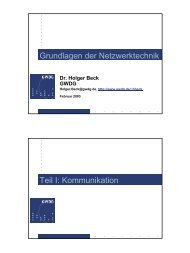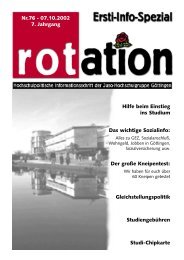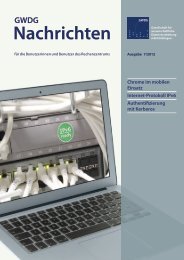Forschung und wissenschaftliches Rechnen - Beiträge zum - GWDG
Forschung und wissenschaftliches Rechnen - Beiträge zum - GWDG
Forschung und wissenschaftliches Rechnen - Beiträge zum - GWDG
Erfolgreiche ePaper selbst erstellen
Machen Sie aus Ihren PDF Publikationen ein blätterbares Flipbook mit unserer einzigartigen Google optimierten e-Paper Software.
need for an easy access to information about the world’s linguistic diversity<br />
for both scientific and educational purposes is growing continuously.<br />
However, there are few efforts to develop tools that provide such<br />
functionality (a rare example is Kortmann et al. 2004). The Interactive<br />
Reference Tool to the World Atlas of Language Structures has been<br />
developed to fill this gap.<br />
The Interactive Reference Tool (IRT) has been designed as a platform<br />
for visualization of linguistic phenomena worldwide, incorporating multiple<br />
search facilities and tools for generating maps. The program combines easy<br />
install and use for experts and non-experts alike. The data that are currently<br />
available within the IRT are the data as supplied by the World Atlas of<br />
Language Structures, but the program is set up to be easily expandable in<br />
the future. However, to introduce the kind of data that the IRT is supposed<br />
to handle, first a quick introduction to the World Atlas of Language<br />
Structures will be given. After this, the functions as provided by the IRT<br />
will be presented.<br />
1.1. The World Atlas of Language Structures<br />
The World Atlas of Language Structures (Haspelmath et al. 2005) is<br />
currently the largest available coherently structured collection of<br />
grammatical information on the world’s languages. The atlas has been<br />
published as a printed book in traditional atlas format. It consists of 142<br />
world-maps—with accompanying texts—on highly diverse characteristics<br />
of language. For example, there are maps showing the number of vowels in<br />
a language, the order of noun and genitive, the existence of a passive<br />
construction, or whether the language distinguishes different words for the<br />
meanings 'hand' and 'arm' or not.<br />
The data have been gathered from descriptive materials as available on<br />
the world’s languages (such as reference grammars) by a team of more than<br />
40 authors, many of them the leading authorities on the subject. Each map<br />
shows a representative sample of the world’s languages, comprising<br />
between 120 and 1,370 languages out of the approximately 7,000 languages<br />
currently spoken aro<strong>und</strong> the globe. In the maps, each language is<br />
represented by a dot with different colors and shapes indicating the<br />
different linguistic types. Altogether 2,560 languages are included in the<br />
atlas, and more than 58,000 dots give information on the structure of the<br />
world’s languages. Although endangered languages are not particularly<br />
emphasized in the atlas, they are automatically fore-gro<strong>und</strong>ed because each<br />
language is shown by a uniformly formatted dot, independently of its<br />
number of speakers.<br />
Because of the intuitive display in the form of an atlas, the World Atlas<br />
of Language Structures makes information on the structural diversity of the<br />
76



